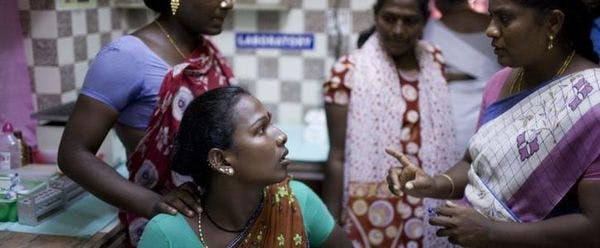El acento en los grupos de población clave afectados por el VIH: una inversión inteligente para un mayor impacto
En una época de recursos limitados, las medidas para la prevención, la atención y el tratamiento del VIH deben poner el acento en las inversiones más inteligentes, es decir, en los programas que puedan tener el mayor impacto a la hora de detener la transmisión del VIH y hacer retroceder la epidemia. Más información, en inglés, está disponible abajo.
Suscríbase a las Alertas mensuales del IDPC para recibir información sobre cuestiones relacionadas con políticas sobre drogas.
In an era of limited resources, HIV prevention, care, and treatment efforts need to focus on the smartest investments. This means investing in programmes that can have the greatest impact in halting HIV transmission and turning back the epidemic. From a public health perspective, the effective use of resources requires focusing on key populations who have the highest level of HIV infection and tackling the barriers that discourage and prevent them from accessing health systems and services. These populations are broadly defined as sex workers, men who have sex with men, transgender people, and people who inject drugs.
As the world gathers at the 20th International AIDS Conference (AIDS 2014) in Melbourne, Australia, July 20–25, 2014, we have an excellent opportunity to share how investing in evidence-based strategies can change the trajectory of the epidemic once and for all.
We know what works to prevent HIV acquisition and transmission among key populations and how to link these groups to HIV treatment and retain them over time. Yet, in reality, sex workers, men who have sex with men, transgender people, and people who inject drugs are often unable to find and access respectful and high-quality HIV services. Limited systems capacity, stigma and discrimination, violence, discriminatory laws, harmful gender and other social norms, exclusion from meaningful input into programmes, and lack of government support to scale up and sustain current donor-supported services for key populations remain persistent obstacles.
Programmes for key populations are especially weak and fragmented in sub-Saharan Africa, where the focus has primarily been on curbing the epidemic among the general population. Recent efforts to provide HIV services for key populations in the region have encountered new barriers. State-sponsored attacks and deeply discriminatory laws prohibiting same-sex relations in Nigeria and Uganda further exacerbate the many challenges already facing key populations in accessing HIV prevention and care.
Read the full article.
Keep up-to-date with drug policy developments by subscribing to the IDPC Monthly Alert.
Temas
- Inclusión social
- Acción policial
- Derechos humanos
- VIH/Sida
- Reducción de daños
- Género
- Justicia penal
- Participación de la sociedad civil
- Acceso a medicamentos fiscalizados
- Salud y reducción de daños
- Descriminalización, regulación y reforma
- Desarrollo y medio ambiente
- Violencia, acción policial y castigo
- Derechos humanos y justicia social
Regiones
Perfiles relacionados
- The Lancet
